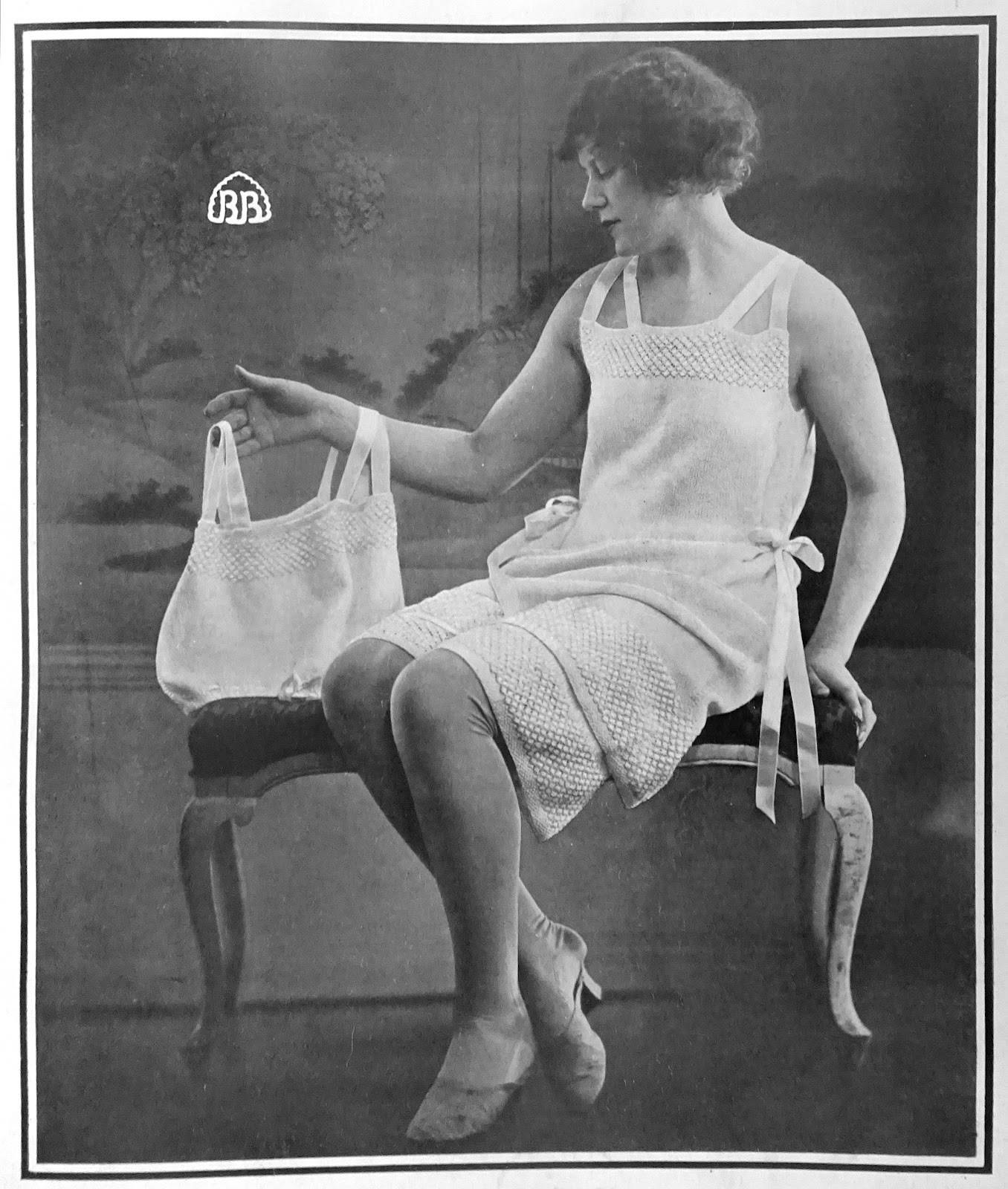 |
| Marriner's leaflet No. 163 |
I have been compiling a catalogue of Marriner's leaflets in the Knitting & Crochet Guild collection from the late 1940s and early 1950s. They are now out of copyright, so that we can copy the leaflets for Guild members. Marriner's leaflets were first published in the late 1940s, and from the start were colour leaflets, nicely designed and attractive.
First, some history of the company behind the brand. This account is mainly based on the book 'Marriner's Yarns: The Story of the Keighley Knitting Wool Spinners', by George Ingle, published in 2004. The address on the pattern leaflets is R. V. Marriner, Greengate Mill, Keighley. The company originated in 1784, when the mill was owned by a partnership, one of the partners being Abraham Smith whose niece and heir Ann Flesher married William Marriner. Their sons bought out the other partners, and the company became B & F Marriner from 1817, and switched from cotton to wool. In 1908, after the death of his father, the company came under the control of Raymond Victor Marriner, a great-grandson of William and Ann, and the company was renamed R. V. Marriner.
In the 1920s, the company formed an association with L. Copley-Smith & Sons, who sold Copley's wools. According to George Ingle, they were "supplying Copley-Smith with about 80% of their yarns and much of their output was hand knitting wool." By the 1930s, one of the R. V. Marriner directors was one of the Copley-Smith sons, so the two businesses were very closely linked. During WW2, production was disrupted, and after the war, the agreement with Copley's was ended, apparently from the Copley's side. Although R. V. Marriner had previously sold some of their knitting wools themselves, by mail order or through their own shops in Keighley, the need to find a new market for the bulk of their production led the company to start selling to yarn shops more widely. The company started to advertise nationally and introduced knitting patterns under the Marriner's brand.
Back to the pattern leaflets. The earliest ad I have seen for Marriner's knitting wool appeared in 1948 and featured leaflet no. 21. The ad emphasises that the leaflets are 'printed in natural colour', so that a knitter could see exactly what the finished garment would look like in the suggested colours. Here is another of the earliest Marriner's leaflets, probably also from 1948, for a Lady's Jumper Coat:
 |
| Marriner's leaflet No. 6 |
The company played up the seafaring connotations of the family name by using a logo of a pair of knitting needles and a skein of wool, arranged to look something like a sailing boat. The colours of the wool copy the colours in the garment - in leaflet No. 6, the skein alternates scarlet and white wool, with a bit of dark blue for the tie.
Marriner's advertised quite widely in women's magazines and needlecraft magazines such as Pins & Needles, and almost always featured at least one pattern leaflet, which is very helpful for dating them. Some of the leaflets in the catalogue have the message "Marriner's have been spinning wool during the reigns of nine Kings and Queens". These must date from after the death of George VI in 1952, and tie in with the starting date of 1784, which was during the reign of George III. That does give nine reigns (George III, George IV, William IV, Victoria, Edward VII, George V, Edward VIII, George VI, Elizabeth II) - but since Greengate Mill was originally a cotton mill, the claim isn't entirely accurate. The slogan gives a handy way of dating some of the Marriner's leaflets, though it was not used consistently, so its absence does not imply an earlier date. Another dating point is the Coronation in June 1953: leaflet 186 has a sticker on the front reading "One of the Marriner Coronation Series". Again, the sticker was not used consistently - another copy of the same leaflet in the KCG collection does not have it. But we can safely say that any Marriner's leaflet with a number less than 186 was published in 1953 or earlier.
.jpg) |
| Marriner's leaflet No. 186 |
The embroidered 'Hungarian Cardigan' in leaflet 186 is knitted in DK wool, and so is perhaps more accessible than many of the earlier patterns which are almost all in 3-ply wool (or even 2-ply) - a hangover from the clothes rationing period of the 1940s, when a little wool had to go a long way.
Many of the leaflets have a black-and-white drawing inside, as well as the cover photo, showing an idealised version of the garment. Here's a pattern for a very fancy bed jacket, with frills everywhere and stranded colour work on the yoke:
 |
| Marriner's leaflet No.107 |
And here is the sketch inside, showing an improbably slender woman in an elegant 1950s boudoir.
Here's another pair of cover photo and sketch:
 |
| Marriner's leaflet No. 133 |
.jpg)
.jpg)

.jpg)

.jpg)








.JPG)

.JPG)
.JPG)
.JPG)
.jpg)
.jpg)

%20photo.JPG)

-001.JPG)

